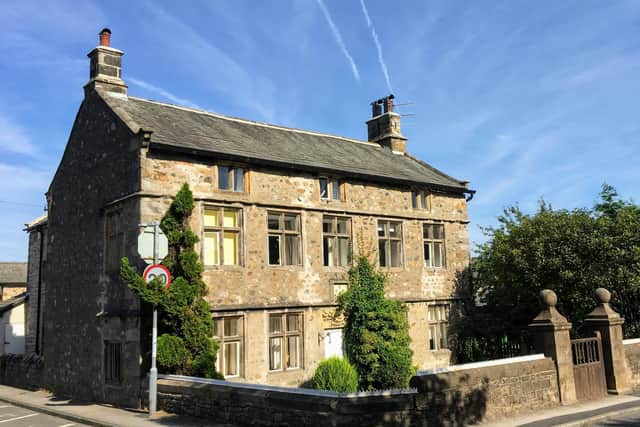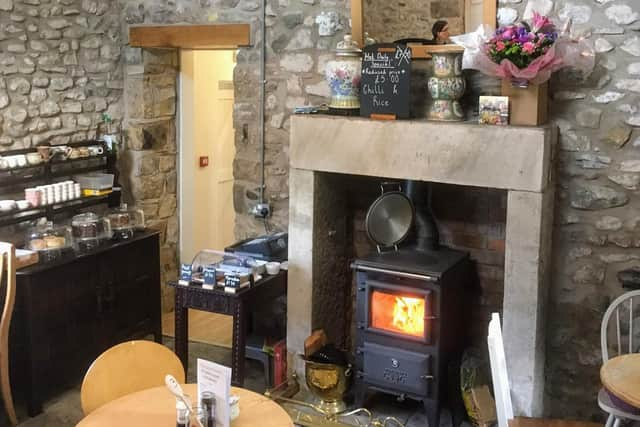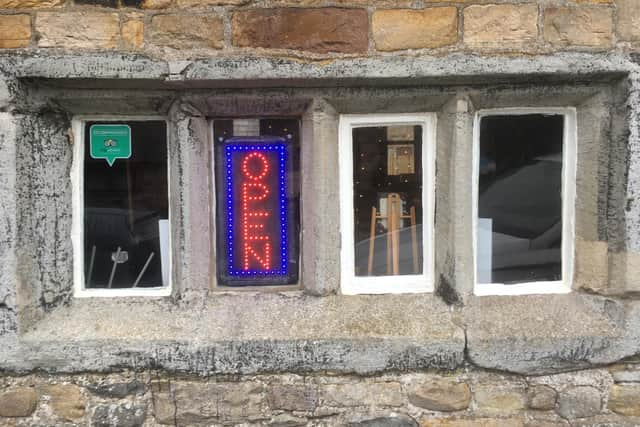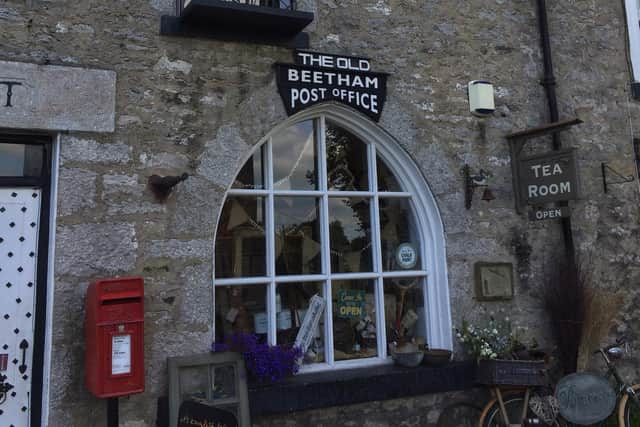Manor House built in 1681 is now a tea room
and live on Freeview channel 276
Now a Grade II listed building, the house is steeped in history and has many period features.
Twenty five metres north of The Manor House is a milestone circa 1800 which is constructed of sandstone with iron plates. It has a triangular section, and is semi-circular at the base, ‘Slyne-with-Hest’ is on the base.
Advertisement
Hide AdAdvertisement
Hide AdThe left-hand plate reads ‘Burton VII 1/2 miles’, the right-hand plate reads ‘Lancaster III miles’.


The gate piers to The Manor House are 18th century are made of sandstone ashlar. There are square sections with cyma cornices and ball finials.
It is difficult to shy away from The Manor’s exposed stonework, consisting of grey squared boulders and cobbles.
If you look more closely, you will see a panel above the front door of the house with the inscription, ‘CGM 1681’. This includes the likely date of the house’s construction and the initials refer to its original owners: Cornelius and Mary Greene.
Advertisement
Hide AdAdvertisement
Hide AdSomething you might not realise from the The Manor’s commanding exterior, is that there is a small tea room to the rear of the main house.


So, who is the behind this innovative idea?
Richard Gittins, the current owner of The Manor, said: “We bought the house from the lovely Hoggarths in December 2016 with the simple intention of using the outbuildings for storage.
“However, this all changed in July 2017 during a visit to The Old Post Office in Beetham with my wife, Vanessa.
“We fantasised about the idea of having a tea room.


“Later, I thought: why not convert the outhouses? So, that’s what we did.
Advertisement
Hide AdAdvertisement
Hide Ad“Almost two years down the line, and with much lighter pockets, we opened our doors to the community.”
The former washroom is now open and operating as a tea room, the focal point an Esse woodburning stove framed by a plain sandstone surround. A further source of light is provided by the mullioned windows, which probably date back from the late 17th century.
The floor, composed of York stone flags, is another original feature of this historical building.


Although the ostensible purpose of the building is uncertain, it is likely that it was used as a wash house. This changed with the passage of time. In accordance with the Ordnance Survey Maps of 1889 and 1910, the kitchen of the tea room seemed to be occupied by three pigsties.
Advertisement
Hide AdAdvertisement
Hide AdThen the Manor House became a dairy farm owned by the Hoggarth family and the area was used for milk processing in the late 20th century. Directly outside of the tea room, is a quaint courtyard.
If you are interested in the history of The Manor House in Slyne-with-Hest, it might be a good idea to follow the footsteps of Bonnie Prince Charlie in 1745 and visit for some refreshments.